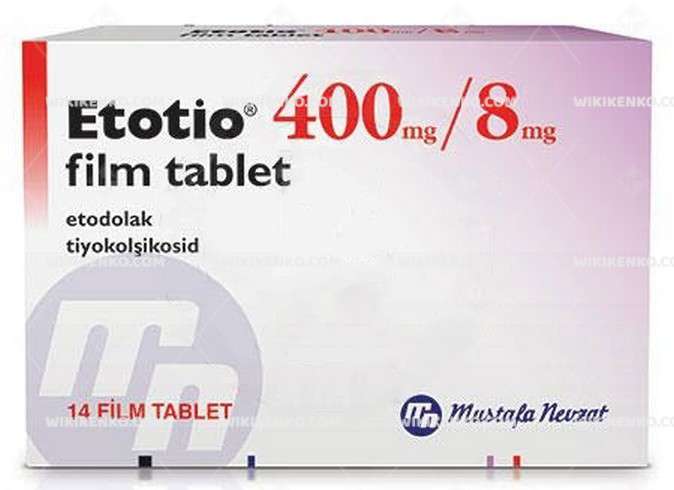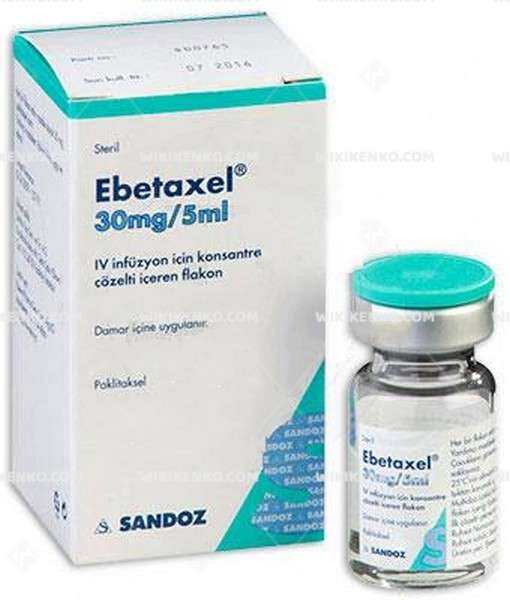Description
Exploring Etodolac and Thiocolchicoside
- Etodolac: A Powerful NSAIDEtodolac, classified as a nonsteroidal anti-inflammatory drug (NSAID), exerts its effects by diminishing hormones responsible for inflammation and pain within the body. It’s a stalwart in pain management.
- Thiocolchicoside: The Muscle RelaxantThiocolchicoside complements Etodolac’s action with its own anti-inflammatory and analgesic properties. As a muscle relaxant, it plays a crucial role in relieving painful muscle contractions.
Clinical Applications of Etotio Film Tablet
Etotio Film Tablet is a versatile pharmaceutical agent, designed for the symptomatic treatment of a range of conditions, including:
- Osteoarthritis: Offering relief to those grappling with joint pain and inflammation.
- Painful Syndromes of the Vertebral Column: A valuable resource for individuals experiencing spinal discomfort.
- Extra-articular Rheumatism: Aiding in the management of rheumatic conditions.
- Painful Muscle Contractions: Alleviating the discomfort caused by muscle spasms.
- Post-Traumatic and Post-Operative Pain: Providing post-injury or post-surgery relief.
Ingredients and Formulation
Etotio Film Tablet’s core components include lactose monohydrate (derived from cow’s milk), microcrystalline cellulose, sodium starch glycolate, colloidal silicon dioxide, polyvinylpyrrolidone, and magnesium stearate, all serving as excipients. The tablet’s film coating comprises hydroxypropyl methylcellulose, titanium dioxide, and polyethylene glycol.
Usage Guidelines for Etotio Film Tablet
For the safe and effective utilization of this medication, meticulous adherence to instructions is paramount. Patients are encouraged to carefully peruse the provided guidelines. Remember, this medication is personalized, and it should not be shared with others. In case of a doctor or hospital visit while under Etotio Film Tablet treatment, promptly inform the healthcare provider of its usage. Ensure strict adherence to the recommended dosage and do not deviate from the prescribed levels.
Situations to Avoid Etotio Film Tablet
Etotio Film Tablet is contraindicated in specific scenarios:
- Allergic reactions to Etodolac, Thiocolchicoside, or any excipient within the tablet.
- History of severe allergic reactions to drugs in the same class as Etodolac (e.g., ibuprofen, celecoxib).
- Existing or previous stomach or intestinal ulcers or bleeding associated with painkillers.
- Severe heart, kidney, or liver failure.
- Pregnancy or breastfeeding.
- Conditions that impair muscle function (muscle contraction).
Side Effects
Etotio Film Tablet, housing Etodolac and Thiocolchicoside, can potentially induce various side effects. Etodolac, in particular, may lead to common side effects such as nausea, vomiting, stomach pain, indigestion, diarrhea, constipation, gas, dizziness, weakness, sore throat, runny nose, flu symptoms, itching, rash, or headache. However, this list is not exhaustive, and other side effects may manifest. In the presence of unusual symptoms during Etotio Film Tablet use, promptly seek guidance from a healthcare provider.
Thiocolchicoside, while effective, may trigger photosensitivity reactions and irritate the digestive system. Physicians may recommend the concurrent use of gastric protective drugs when consuming Thiocolchicoside tablets or capsules.
Pregnancy and Breastfeeding Considerations
Etotio Film Tablet is not suitable for use during pregnancy or breastfeeding. The medication’s composition includes Etodolac, an NSAID that can pose risks to an unborn baby if taken during the final trimester of pregnancy. Additionally, Thiocolchicoside, a muscle relaxant, may transfer into breast milk and potentially harm a nursing infant. Therefore, it is crucial to avoid using Etotio Film Tablet under these circumstances.
Conclusion
In conclusion, Etotio Film Tablet, with its combination of Etodolac and Thiocolchicoside, emerges as a valuable tool in managing various painful conditions. However, adherence to usage guidelines and the avoidance of this medication in specific situations are pivotal. Patients are encouraged to promptly report any unusual side effects to their healthcare providers for proper guidance and management.
Table: Summary of Etotio Film Tablet
| Medication | Composition | Clinical Applications | Usage Guidelines | Situations to Avoid | Potential Side Effects | Pregnancy & Breastfeeding Considerations |
|---|---|---|---|---|---|---|
| Etotio Film Tablet | Etodolac (400 mg) and Thiocolchicoside (8 mg) | Osteoarthritis, Vertebral Column Syndromes, Extra-articular Rheumatism, Painful Muscle Contractions, Post-Traumatic and Post-Operative Pain | Careful Review of Instructions, Personalized Prescription, Adherence to Dosage | Allergic Reactions, Ulcers, Severe Organ Failure, Pregnancy, Breastfeeding, Muscle Dysfunction | Nausea, Vomiting, Stomach Pain, Indigestion, Diarrhea, Gas, Dizziness, Weakness, Sore Throat, Runny Nose, Itching, Rash, Headache, Photosensitivity, Digestive Irritation | Avoid During Pregnancy and Breastfeeding |







Reviews
There are no reviews yet.